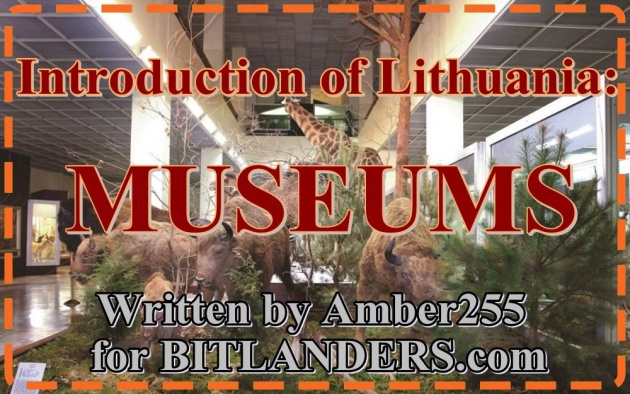
Introduction of Lithuania: Most Famous Museums - Photo credit: Amber 255 via Bitlanders.com
Greetings my dear readers. I have written already two blogs introducing my country Lithuania: the blog about most famous castles, and the blog about manors and palaces. This time, I want to introduce you most famous museums of Lithuania. We are a little country, but we have a lot of museums. Some of our museums are exceptional in Europe, and even worldwide. For instance, amber museum. The museums create a distinctive, often special space that helps to feel the spirit of a particular period or phenomenon. Currently, about one hundred museums are counted in Lithuania.
Museums today and in the past are very different. More and more, the most modern museums of Lithuania become not only repositories of works of art or exhibitions, but also educational centers, live meetings with the past, the spaces of creative workshops. Creativity, imagination, offering to the visitor to make one or another museum exhibit are just a few aspects of the modern, creative activity of the museum.
While reading my blog about most famous museums of Lithuania, please check the QUERLO CHAT:
The History of the Museums
The first museums began to develop in the 16th-17th centuries, in the cities of Europe by the efforts of private collectors who sought to attract people to the unusual objects, most commonly natural. This way was created a new entertainment for that era to attract a higher level of society.
Later, these collections were connected to the development of scientific activities, scientific research was published on the basis of the researchers, and all this became more easily accessible to the general public.
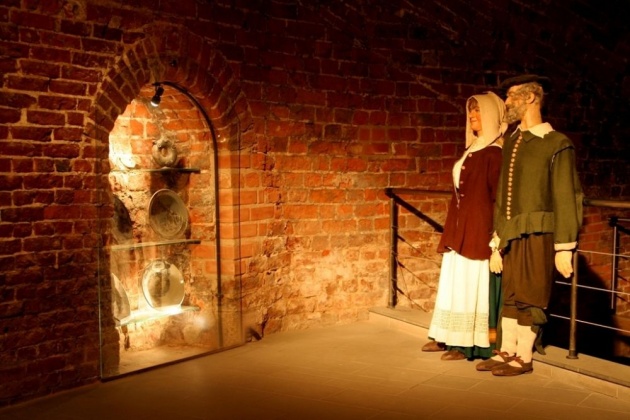
The History of the Museums - Photo credit: klaipedainfo.lt
The first public museum in Lithuania - the Vilnius Antiquities Museum - was founded in 1855 on the initiative of the Vilnius Archaeological Commission. At that time, the museum performed not only the role of protector but also supported, promoted scientific research activities. Many landlords of that time considered a part of honor or even culture to accumulate the so-called collections of antiquities in their manors, which comprised not only the cultural heritage of the country but also heritage representations of other countries.
Historically, the museums have been formed for a long time with a certain aura of mystery and respect.
For the visitor, the museum should have been an untouchable sanctuary, where the undisputed truth is presented. Until the 20th century, traditional museums followed the undisputed principles: accumulation, preservation, and exploring.
Museums are managers of consciousness. They give us an interpretation of history, of how to view the world and locate ourselves in it. They are, if you want to put it in positive terms, great educational institutions. If you want to put it in negative terms, they are propaganda machines. - Hans Haacke
Credit: brainyquote.com
Lithuanian Sea Museum
The Lithuanian Sea Museum is located on another shore of city Klaipeda, in the Kopgalis, the northernmost point of the Curonian Spit, where the Curonian Spit Peninsula (98 kilometers long) ends, and the Klaipėda Seaport Gate opens. In the second half of the 19th century, the defense fortress of the seaside - Neriya Fort was built in Kopgalis, which was almost destroyed during the Second World War. After the war, the Neriya Fort was rebuilt and adapted to the needs of the museum. Today, you can walk along this historic fort too.
Lithuanian Sea Museum, Klaipeda - Video credit: TheNata13 via Youtube.com
The museum is one of the most famous, interesting, and most visited museums of Lithuania. To reach the museum, you can only by ferry or boat. The museum's exposition is a magical, and it fascinates by the world of water depths, with not only diverse fish, seals, northern and California sea lions, but also impressive shipping history exposition. Permanent museum animals surprise and entertain the visitors by expressive performances. Visiting this museum, you will discover the mysterious world of water!
The museum has not only new modern aquariums, but also the tunnel built in not long ago after the reconstruction, in which visitors find themselves drowning underwater with sturgeons, Raia fishes, piranhas, and other fish floating over their heads.
In the sea museum, you can not only see various fishes, seabirds, and mammal exhibitions, to watch the California Sea Lion performances, feed animals, but also check your knowledge at 7 terminals, and learn about interesting things with the educator. In the summer cottage, there are educational workshops on different topics. The museum offers its visitors a personalized electronic guide (tablet) providing information in even six languages.
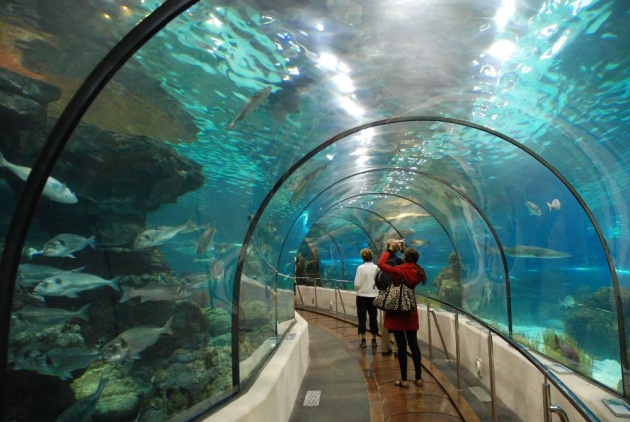
Lithuanian Sea Museum, Klaipeda - Photo credit: cartoontist.wordpress.com
The Lithuanian Sea Museum also hosts a Dolphinarium, the only one on the entire eastern coast of the Baltic Sea. The dolphins there (the Black Sea's Afalina) not only delight watchers by their performances, but also help the disabled children regain the joy of life in dolphin therapy sessions.
Have I been there? Oh yes, many times. It is located in my city, so I know this place very well. It's a most famous tourist sight of our city, so there is no any citizen who has not been there at least one time.
Palanga Amber Museum
Palanga Amber Museum is a Department of Lithuanian Art Museum. It works in the palace of Palanga, surrounded by a large and beautifully managed botanical park. The museum in the center of the park is one of the most visited in the country. The collections of the Palanga Amber Museum accumulated about 29 thousand amber exhibits, of which about 4,5 thousand displayed in the museum exposition. The exposition is updated annually, complemented by unique archaeological finds, amber inclusions, and other valuable exhibits.
Visitors to the palace space on the ground floor admire the renovated historic interiors of the palace, telling about the life of the Count Tyszkiewicz there. The authenticated spaces of the rooms present the history of Palanga and the Tyszkiewicz life here. In these representative palace's halls, the aristocratic residence environment is restored, in which the works of the interior of the noble palace are exhibited.
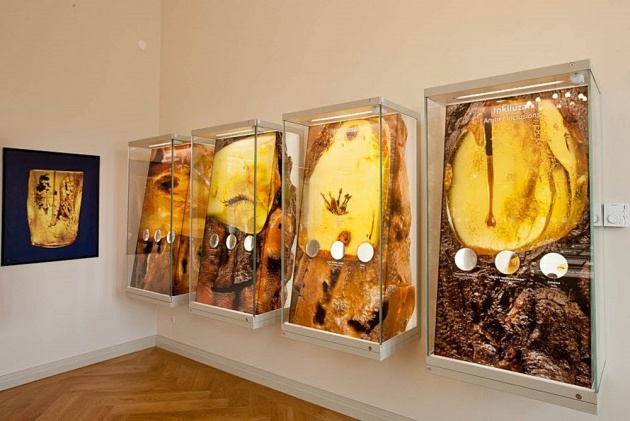
Palanga Amber Museum - Photo credit: https: 15min.lt
On the second floor, there is presented a unique amber exposition, which introduces amber formation, trade routes, mining, and processing. After renovation, it was supplemented with archaeological exhibits, and the collection of inclusions was updated too. Visitors now can see a completely new museum exposition of amber morphology.
The museum is located 25 km from my home. As I love the park where the museum is located, I often come here, but inside the palace, I was only two times.
Lithuanian Museum of Ethnocosmology
The Lithuanian Museum of Ethnocosmology was established in 1990. It became the first and only museum of this kind in the world. The essence of the museum is the connection between human and humanity, and the cosmic world, its reflection, and manifestation in the traditions of the life of the nation, in science, in art, in philosophy and elsewhere.
Look at the summer night through the telescope to the moon, the planets, the star cluster, the galaxy and to feel of the gigantic expanse of the Universe.
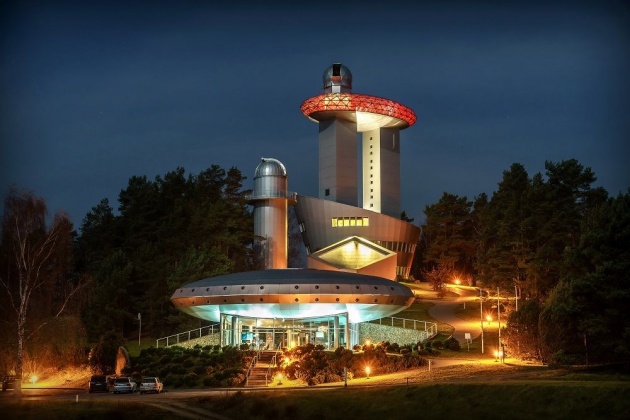
Lithuanian Museum of Ethnocosmology - Photo credit: mitnija.lt
But to be able to look through the telescope at the night time, the clear sky is necessary. For the pre-registered individuals, the museum offers the guide's mobile phone number so that they can find out whether the weather is favorable for night-time's observations. Individual visitors can register also - the museum itself forms groups. The museum uses 80 cm and 40 cm diameter telescopes. Observations begin 1 to 1.5 hours after sunset.
The museum is located in a very nice Lithuanian region with many hills and lakes. We used to go there with my parents for a summer vacation, and my parents introduced this museum to me and my brother. I remember how I was fascinated by the video we were shown about the planets in a universe. A couple years ago, we have been there again, and this time we observed the sky world in the night. It was just a fantastic view.
Kaunas IX Fort Museum
IX Fort is one of the fortifications of Kaunas fortress, a monument of history and architecture protected by the state. The IXth Fort operates as a museum where visitors are introduced to the interesting and unique military architecture of the defense fortress of Kaunas, the examples of the First World War munitions and equipment. Visitors accompanied by the tour guide can explore the inside of the defensive walls.
Another part of the museum exposition presents the period of the Kaunas hard labor prison, introduces the prison population's mode of life, restores the episodes of the NKVD repressions, and reveals the extent of the crimes committed by the Nazis. The authentic chambers, the walls, which contain surviving people's recordings, a large exposition that reveals the Jewish nation's tragedy in Lithuania, telling about the Kaunas ghetto and massacre. The place of the massacre is marked by a statue of the 32-meter-high three sculptural groups.
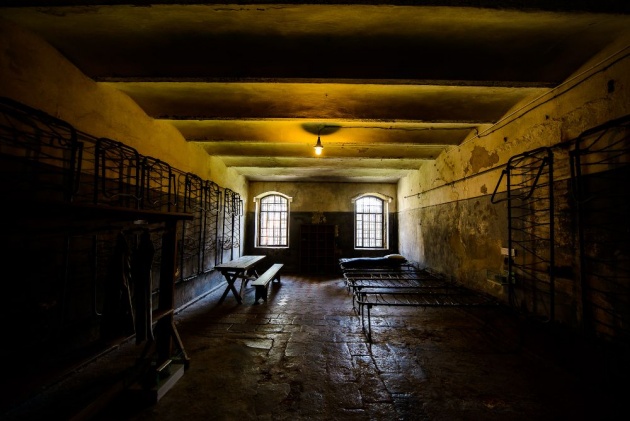
Kaunas IX Fort Museum - Photo credit: 9fortomuziejus.lt
Kaunas IX Fort Museum is a great place for families, school children, organized groups and individual visitors to have a good time and experience the history. The museum hosts various events and commemorations provides guided tours to visitors, organizes educational activities, provides access to the museum exposition through audio and video games.
I have visited many museums being a schoolchild, and some of them left a great impression that forced me to visit them again in order to look at exhibitions with an adult's eyes. This museum is not an exclusion. A few years after the first visit, I came there again. And again, I felt a strange feeling, severe and fearful when looked at the evidence showing what the prisoned people had to go through in this fortress.
The Open Air Museum of Lithuania - The Folk Life Museum
In the school, we had a very good class teacher who was a fan of traveling. With her, we traveled a lot, visited all corners of Lithuania. And the Open Air Museum of Lithuania we also visited. It left a wish to come back and explore this open-air museum more closely without noisy school friends. But to be honest, the second visit was not so big excitement as everything was familiar and already not so interesting.
The Lithuanian Folk Life Museum is an open-air museum founded in 1966 in the Rumsiskes country on the coast of Kaunas lagoon. It is one of the largest Ethnographic Museum in Europe, having the most exhibits under an open sky.
The Open-Air Museum of Lithuania - Photo credit: Akimirkaore via Youtube.com
The museum presents the period of 18th-20th centuries in the villages and towns of Lithuania. There are the architectural, cultural, and public exhibits of Lithuanian ethnographic regions. In a museum, we can explore the barns, cowsheds, sheds, mills, fences, wells, folk architecture and antiquities. There are farmsteads of all 5 ethnographic regions of Lithuania, individual buildings, various workshops, and folk technical monuments. The museum hosts the traditional Lithuanian celebrations, it organizes educational activities and runs a riding band.
In the center of the museum, there is a small town with its characteristic buildings in which pots are rolled, amber and wood products are produced. The deportation and resistance sectors reflect the painful events of Lithuania. Folk Life Open Air Museum is the only ethnographic museum in the country, presenting undersized Lithuania - ethnographic regions of the country.
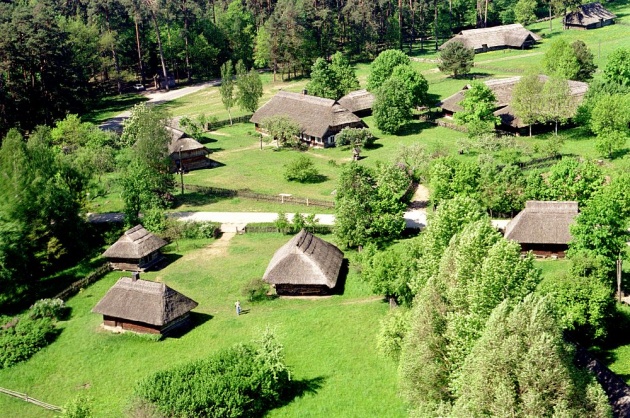
The Open Air Museum of Lithuania - Photo credit: draugiskasmazyliui.lt
Trakai Historical Museum
The Trakai Historical Museum is located in the picturesque natural area, in the most famous Lithuanian Defense Architectural Complex - the castles of the Island and Peninsula in Trakai. Whoever has visited the Trakai Island castle, that for sure visited a museum also.
The museum was founded in 1948. The main function of the Trakai Regional Museum was to promote the achievements of the Soviet system. Later, the restored Trakai Island Castle's Central Palace was handed over to the museum. It was decided to arrange an exposition in the castle, which would present the history from the earliest times to 1940.
Currently, the museum has accumulated large collections of archeology, numismatics, writings, applied arts, and history items. The museum invites to the annual Medieval celebration in the territory of the Trakai Peninsula Castle. Also, the Old Craft Days began to be organized in the castle of the island, during which the medieval scenes of life, crafts, music, and dances are revived. Museum staff, enthusiasts of cultural heritage, dress in their sewn medieval clothes, prepare their own cuisine, and meet the guests with meals and drinks made by antique recipes. The craftsmen create ceramic, metal, jewelry ware; the herbalists teach the healing herbs, how to regain the strength, and offer to try the elixir of youth.
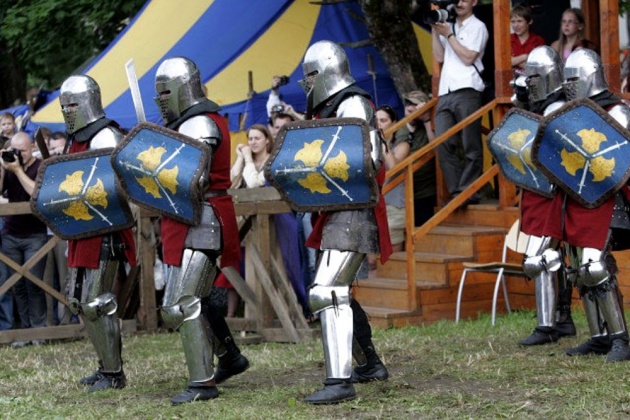
Trakai Historical Museum - Photo credit: kultura.lrytas.lt
I have been in a museum, but I have never visited Old Craft Days celebration organized by the museum. I heard that it's worth seeing the fights of medieval knights dressed up in heavy armor. I need to find time to visit it, but it is too far away from my home.
Vytautas the Great War Museum
The museum was started in 1919. After a few years, due to bad internal state, the museum was closed and was made a decision to build a new building. The new War Museum was given the title of Vytautas Great and became a museum of the nation. The museum has accumulated and exhibited valuable items collected not only in Lithuania but also abroad.
Vytautas the Great War Museum is unique in that it is the first museum in Lithuania, whose building was built specifically for the purpose of the museum. Until then, museums were located in the premises of schools or other buildings, that had other purposes. The artillery cannons were taken from Kaunas forts and were erected in the museum's garden. The entrance to the museum was decorated with lion sculptures brought from the Astravas manor.
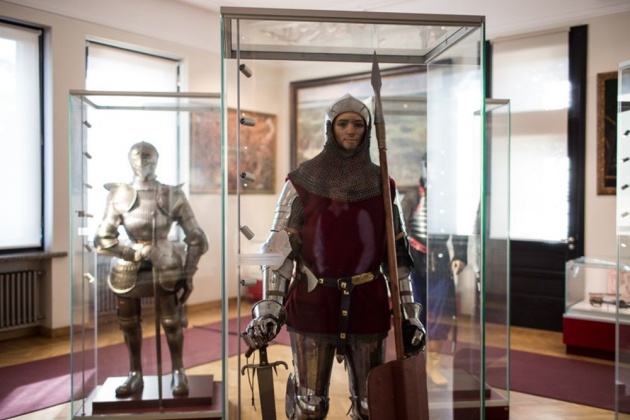
Vytautas the Great War Museum - Photo credit: renginiai.kasvyksta.lt
The Soviet occupation influenced the museum. The use of names of Lithuanian dukes and other Lithuanian people was banned, and the museum was named as the Military Museum. After Lithuania announced its independence, the name of the Vytautas Great War Museum was returned. Thanks to the museum employees, some of the exhibits were returned too. The museum's collection includes archaeological finds, cold and firearms, ammunition collections, telling about the development of the state of Lithuania and the military history. The museum collects, protects, restores, investigates and promotes the monuments of the struggle for freedom and independence of the Lithuanian nation, the evolution of weapons and military attributes, material and spiritual cultural values that introduce the history of Lithuania and other countries, warfare menu from ancient times to our days.
I have been one time in this museum, and it happened in old school days. Somehow never found time to visit it again. I must say that remember not too much from this visit. I was a child, and I was not much interested in wars, fights for independence and so on.
On the Final Note
Museums are the institutions of memory. The duty of museums is to preserve the tangible and intangible natural and cultural heritage. So museums, like archives or libraries, are obliged to preserve the cultural, family, community, region or state memory, its representative material and spiritual heritage.
Modern museums are very different from the previous Don't touch exhibits museums. Being modern, interactive, they are able to interest and involve both the child and the adult. The museum's knowledge and time spent together is probably the best that parents can give their children.
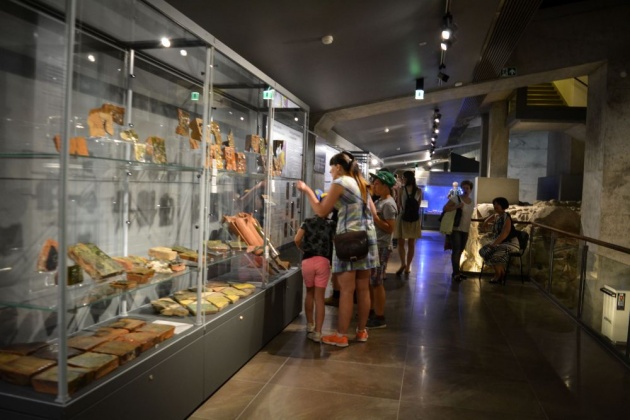
Visit most famous museums of Lithuania - Photo credit: 15min.lt
There are several specific functions that the museum keeps, transforms, and provides to the public. The museum is a research, cultural, and educational institution. The museum is even a social institution that helps rehabilitate certain groups or communities. A museum is also a place for the leisure time.
Culture is the foundation of value education. A person interested in culture, loving culture, and living along the principles of culture will always be initiative, smart, and active. He will always be a citizen of its own country.
Museums provide places of relaxation and inspiration. And most importantly, they are a place of authenticity. We live in a world of reproductions - the objects in museums are real. It's a way to get away from the overload of digital technology. - Thomas P. Campbell
Credit: brainyquote.com
So, welcome to explore most famous museums of Lithuania!
***************************************************************************************************
Thank you for stopping by and reading my blog.
2018, All Rights Reserved.
You are very welcome to join Bitlanders and share your valuable knowledge and opinion.
***************************************************************************************************
You can check my other blog about Lithuania:
1. Easter Customs and Traditions in Lithuania
2. Traditional Lithuanian Cuisine in the Past and Now
3. Introduction of Lithuania: Most Famous Lithuanian Castles
4. Introduction of Lithuania: Most Famous Manors and Palaces
Come back to find more...
**************************************************************************************************



